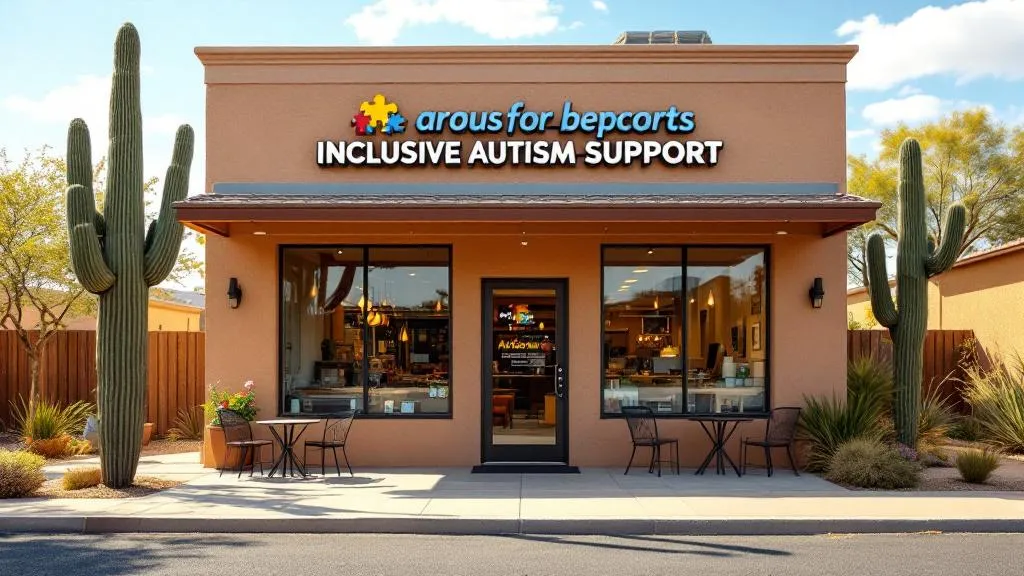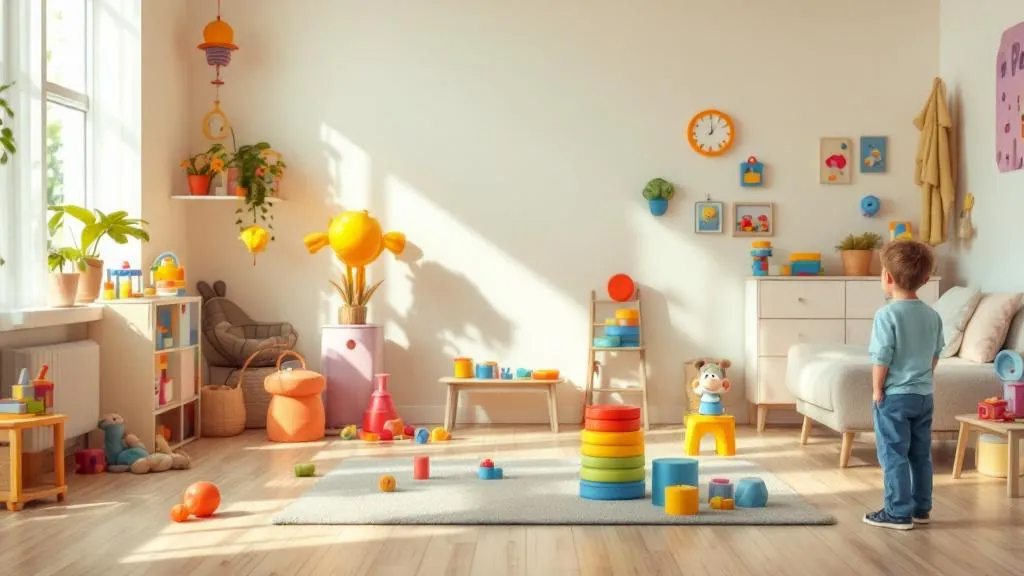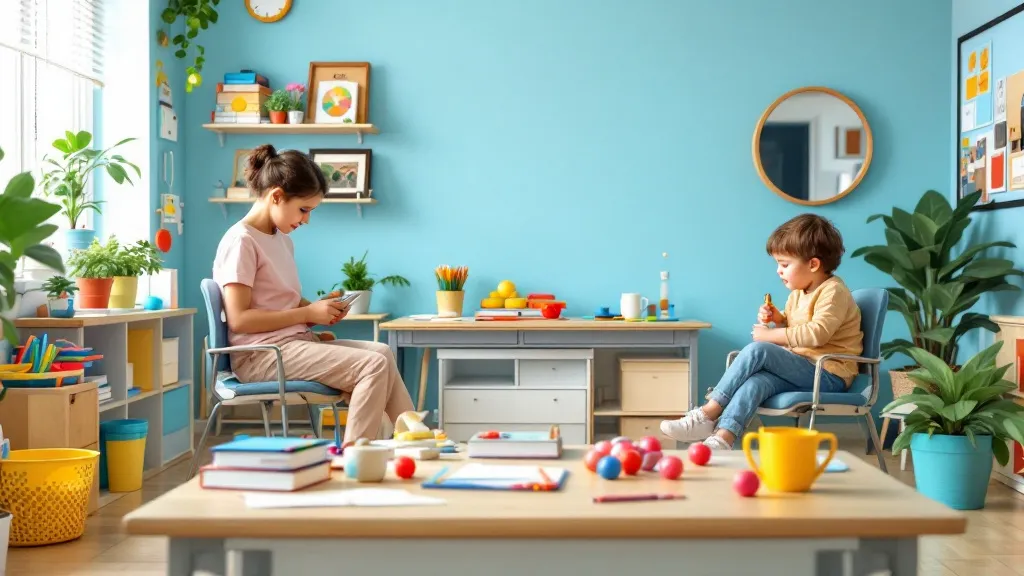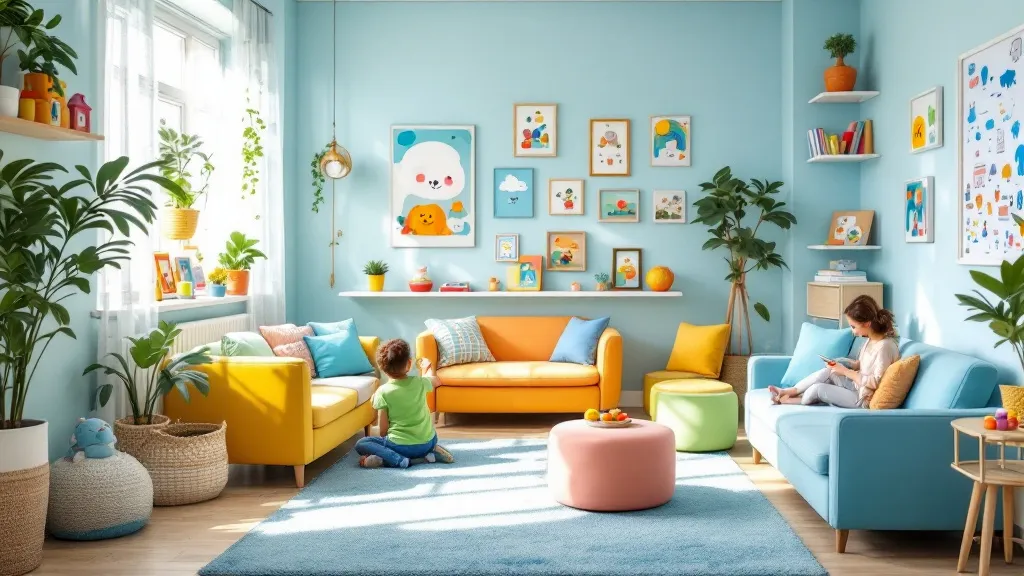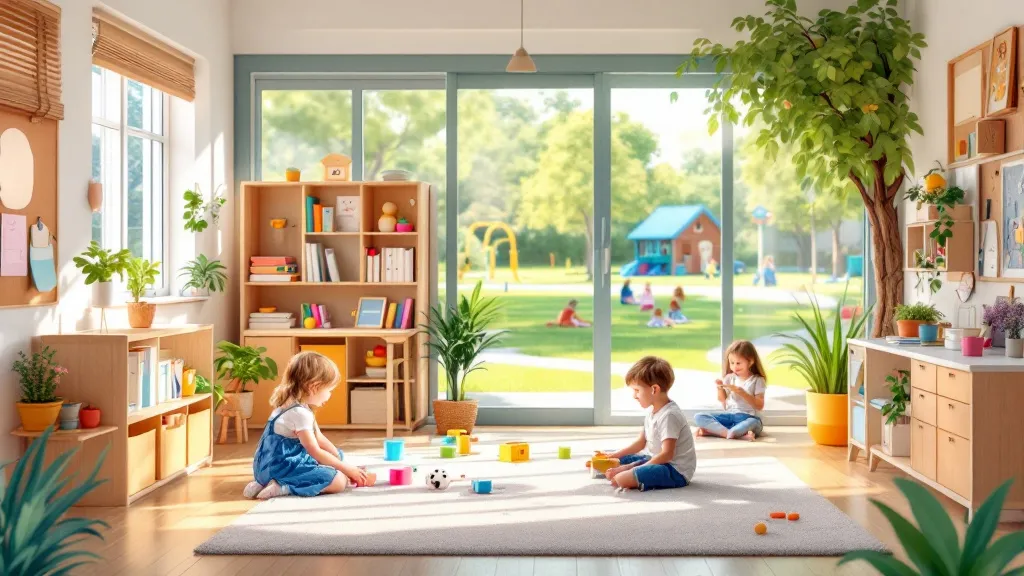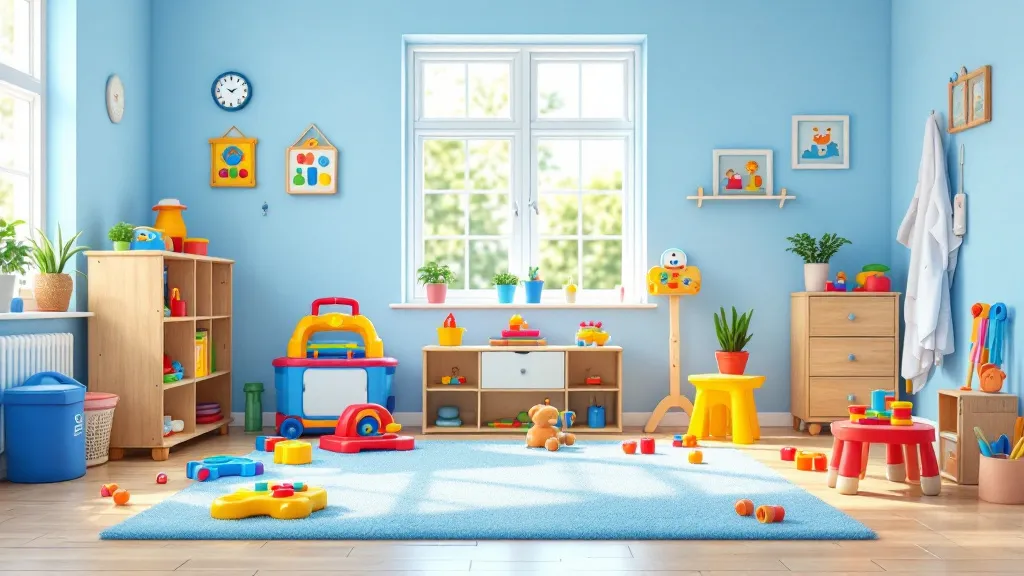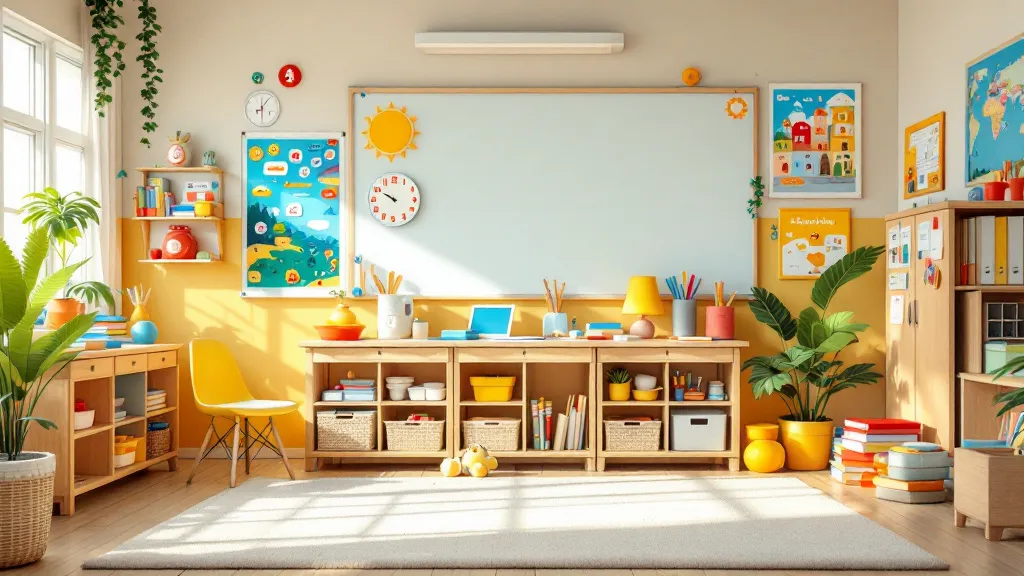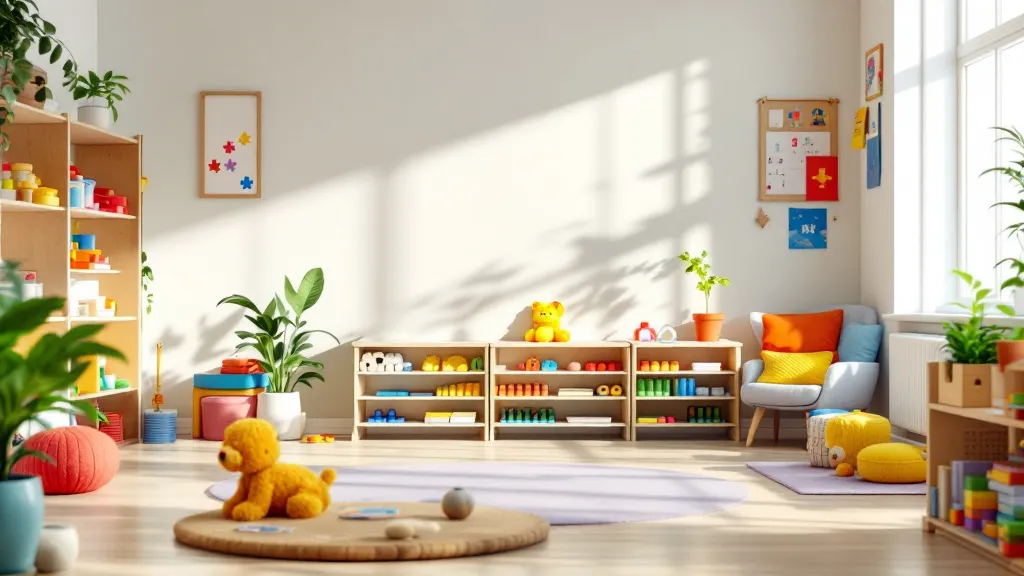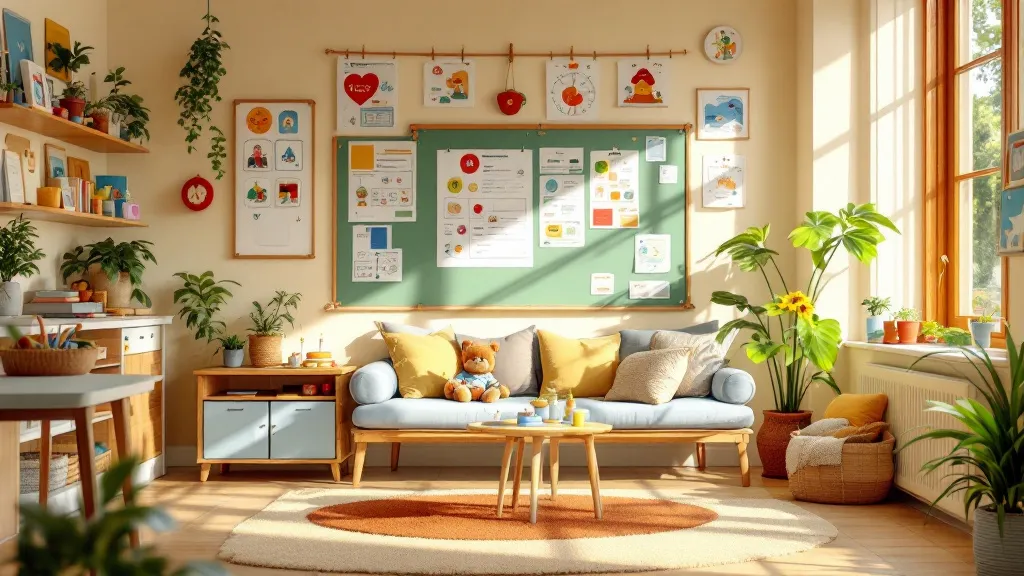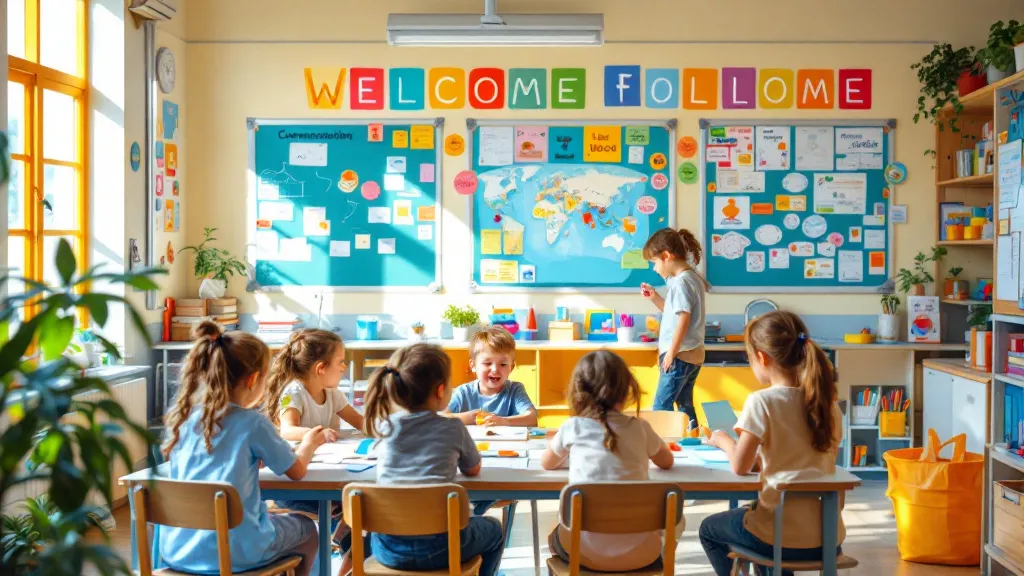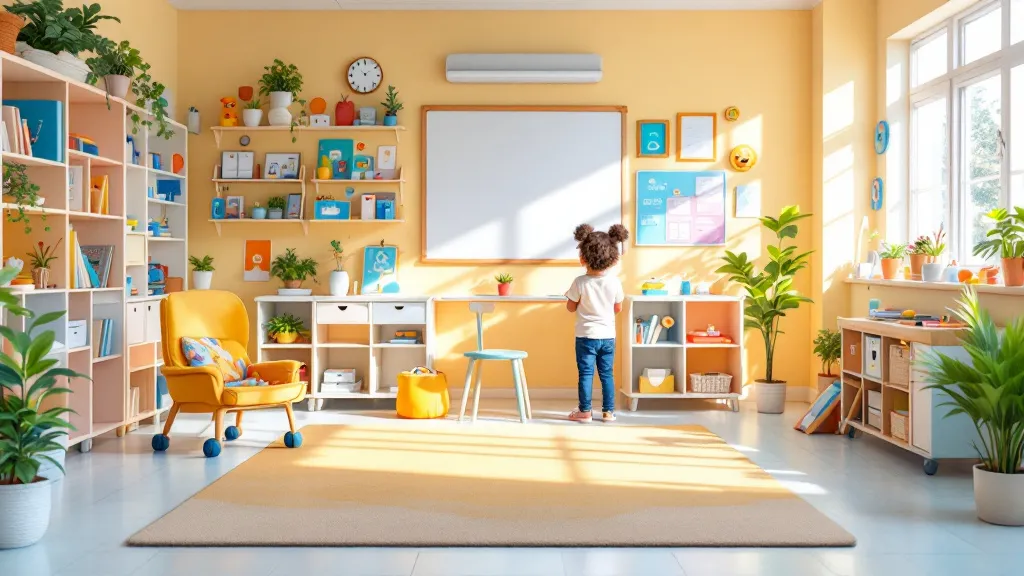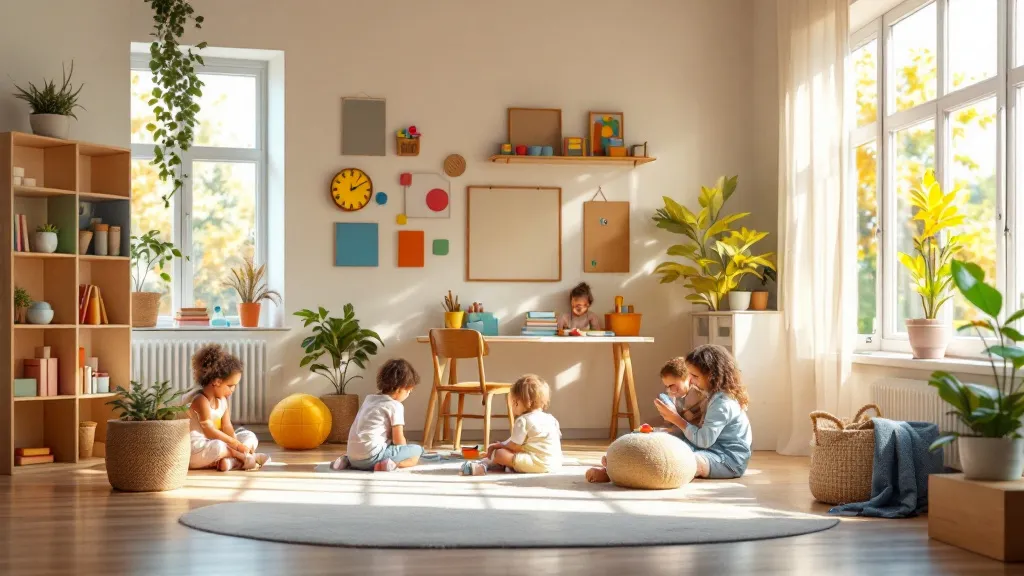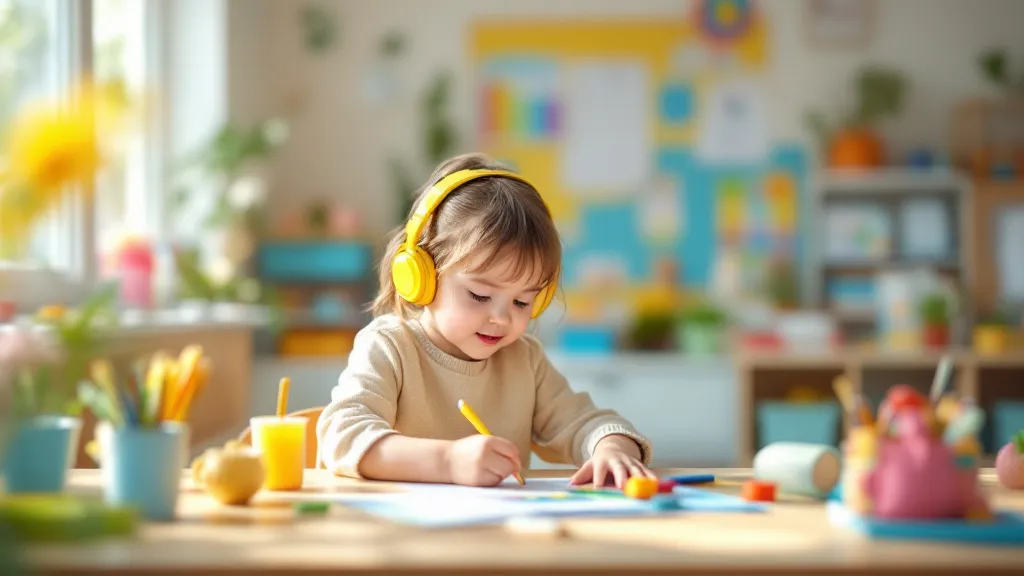ABA tips for co-regulation with caregivers
Building Emotional Resilience through Co-Regulation in ABA Practice

Understanding the Foundation of Co-Regulation in Caregiving
In the context of ABA therapy, co-regulation is a cornerstone for fostering emotional stability and development in children. It involves supportive, reciprocal interactions that enable caregivers to assist children in managing their physiological and emotional states, setting the stage for self-regulation. This article explores the essential indicators, strategies, and implementation steps for effective co-regulation, providing practical guidance for caregivers aiming to enhance their support for children, particularly those with autism.
Defining Co-Regulation in Child Development

What is co-regulation in child development?
Co-regulation is a collaborative, dynamic process where a caregiver supports a child's ability to manage their emotions, thoughts, and behaviors through attentive and responsive interactions. It begins in infancy and continues throughout childhood, forming the foundation for self-regulation skills.
During co-regulation, adults model calmness, empathy, and patience, providing a sense of safety and trust. They respond to cues of distress or dysregulation by offering comfort, guidance, and reassurance. This interaction helps children interpret their bodily feelings and emotional states, fostering interoceptive awareness—the ability to understand internal bodily signals.
Effective co-regulation involves caregivers managing their own emotions first, ensuring they are calm before approaching a distressed child. Techniques include maintaining eye contact, using a gentle voice, labeling feelings out loud, and engaging in calming activities like deep breathing or physical soothing.
As children grow, their support needs during co-regulation evolve. In early childhood, physical comfort and immediate reassurance are essential. As they develop, caregivers shift toward teaching coping strategies, encouraging emotional literacy, and supporting independence in managing feelings.
Building a trusting relationship through consistent, attentive, and non-judgmental support helps children feel safe to explore and master self-regulation. This process not only reduces stress and anxiety but also promotes social skills, resilience, and overall emotional well-being.
In sum, co-regulation is a foundational, reciprocal process that nurtures emotional development by facilitating the transition from external support to internal self-control, equipping children with lifelong skills to navigate their inner world.
Indicators of Effective Co-Regulation
 In co-regulation, certain behaviors and cues signal a strong, responsive connection between caregiver and child. Recognizing these indicators helps ensure that the relationship remains attuned and supportive.
In co-regulation, certain behaviors and cues signal a strong, responsive connection between caregiver and child. Recognizing these indicators helps ensure that the relationship remains attuned and supportive.
The five primary indicators are:
Eye contact – Maintaining or sharing eye contact shows attentiveness and engagement. It communicates that the caregiver is fully present and receptive to the child's emotional state.
Safe touch – Gentle, appropriate physical contact, such as a comforting hand on the shoulder or holding, can provide reassurance. Safe touch respects the child's sensory needs and promotes a sense of security.
Proximity – Being physically close, whether through sitting together or staying nearby, strengthens emotional bonds and helps regulate heightened feelings.
Congruence of effect – This refers to the caregiver's emotional expressions matching the child's feelings. If a child is upset, the caregiver's calm demeanor reinforces understanding and safety.
Receptivity to empathy – Demonstrating genuine interest and responding sensitively to the child's emotional cues encourages trust and openness.
What are the five indicators of co-regulation?
The five indicators of co-regulation are eye contact, safe touch, proximity, congruence of effect, and receptivity to empathy. These cues exemplify the reciprocal nature of a secure and attuned relationship. They help establish mutual understanding and are critical in therapies designed to repair attachment, like Reactive Attachment Disorder (RAD). When caregivers are mindful of these indicators, they can better assess and deepen their responsiveness, fostering trust and emotional stability in the child.
Incorporating these behaviors into daily interactions supports the development of a secure attachment base, essential for emotional resilience and regulation. Ultimately, attentive attention to these cues creates a foundation for healthy, supportive relationships that promote the child's overall wellbeing.
Strategies for Effective Co-Regulation
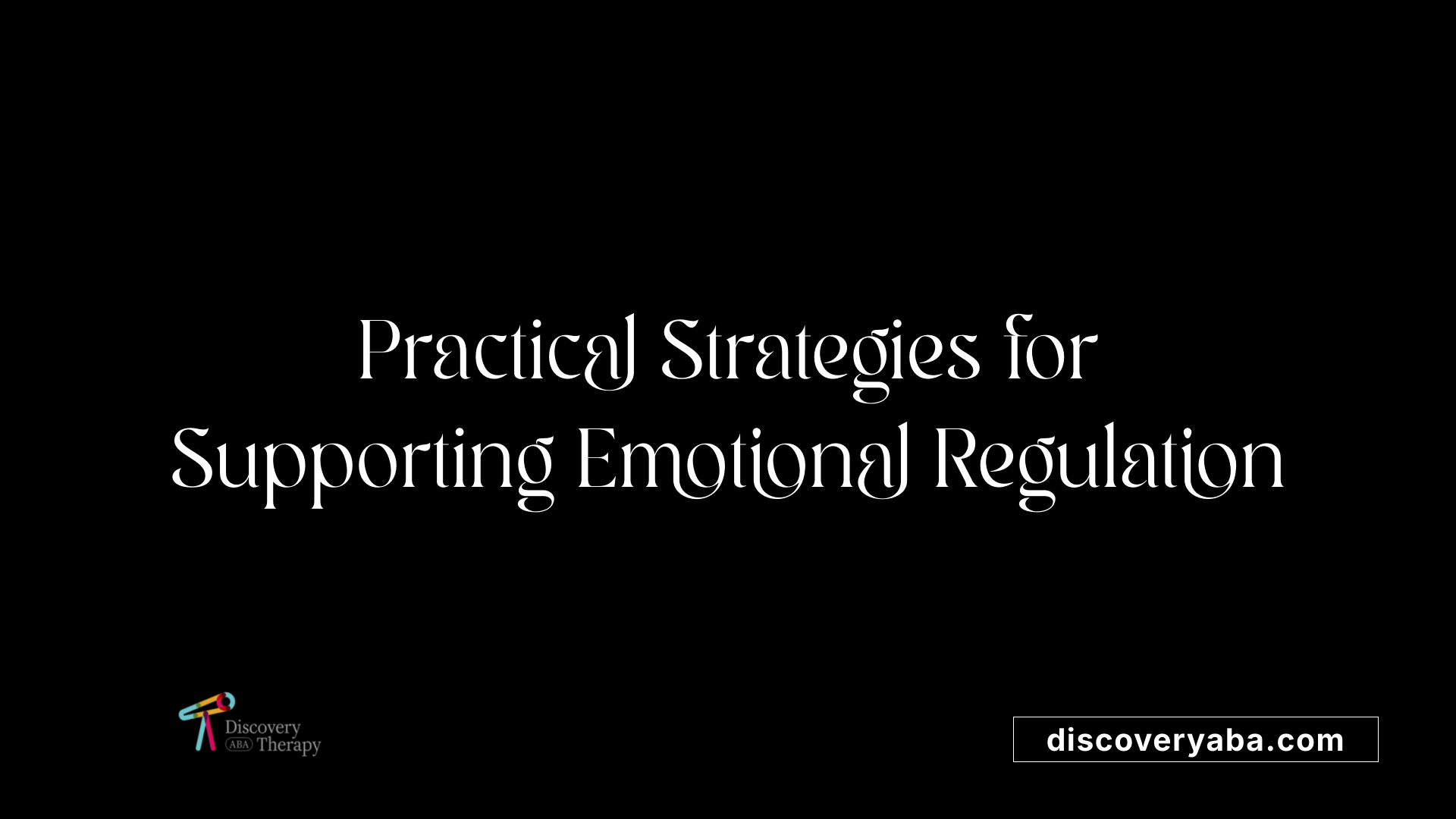
Calm posture and tone
Maintaining a calm posture and speaking in a gentle tone are fundamental strategies in co-regulation. When caregivers approach a distressed individual with a steady and soothing demeanor, it communicates safety and support. This non-verbal cue helps reduce the individual's arousal level and creates a sense of trust.
Naming and validating emotions
A vital part of co-regulation is helping the individual identify and articulate their feelings. Caregivers can model this by naming emotions—such as "I see you're feeling upset"—and validating those feelings without judgment. This teaching approach fosters emotional literacy and reassures the individual that their feelings are understood and acceptable.
Maintaining physical comfort
Providing physical comfort, like gentle touch, hugs, or holding hands, can significantly aid in calming. It’s important to respect sensory needs—some individuals may prefer less tactile contact or different forms of comfort. Creating a sensory-friendly environment also supports emotional regulation by reducing overstimulation.
Modeling self-regulation techniques
Adults serve as role models by demonstrating calming techniques such as deep breathing, progressive muscle relaxation, or grounding exercises. When caregivers openly practice and verbalize these strategies, children learn self-regulation skills that they can adopt gradually.
Establishing routines
Consistency and predictability play a major role in maintaining emotional security. Structured routines, including regular meal times, sleep schedules, and calming transitions, help children feel safe and in control. Repeated exposure to these routines fosters a sense of stability that is crucial for regulation.
Examples of co-regulation strategies
Implementing these techniques involves showing presence, validating feelings, and creating a calming environment. For instance, getting on the child's level physically, using a soft voice, and offering physical comfort when appropriate convey support. Sharing activities like controlled breathing or using visual cues can also promote calmness.
Overall, effective co-regulation hinges on active, empathetic engagement. Adults who use these strategies consistently help children develop resilience, emotional awareness, and coping skills that benefit them throughout life.
Implementing Co-Regulation Step-by-Step

What are effective steps for implementing co-regulation?
Implementing co-regulation effectively involves a series of conscious, responsive actions by caregivers and professionals. First and foremost, developing self-awareness of your own emotional and physiological states is essential. When caregivers are calm and regulated, they are better able to support children through their emotional challenges.
Recognizing non-verbal cues is equally important. Children often communicate their feelings through body language, facial expressions, or subtle movements before verbalizing them. Attentively observing these signs allows caregivers to intervene proactively.
Delivering calm and reassuring communication is a cornerstone of co-regulation. Using a gentle tone, consistent eye contact, and affirming words helps create a sense of safety and trust. During moments of distress, validation of feelings—such as saying, 'I see you're upset'—encourages children to feel understood.
Using tools like feeling charts or emotion cards can aid children in identifying and expressing their internal states. These visual supports make abstract feelings more concrete, especially for young children or those with language differences.
Modeling regulation and boundary-setting offers children concrete examples of managing emotions responsibly. Demonstrating deep breathing, counting, or other calming strategies provides a template for children to emulate.
Establishing clear boundaries and guiding children through problem-solving reinforces emotional resilience. For example, helping a child practice safe ways to express anger or frustration teaches coping skills.
Finally, reconnecting after outbursts with positive reinforcement and affection helps rebuild a sense of security. Consistent patience, adaptability to individual developmental needs, and fostering a feeling of safety are vital for successful co-regulation.
By systematically applying these steps—starting with awareness, observance, calm communication, strategic tools, modeling, boundary setting, and reinforcement—caregivers can support children in developing their own self-regulation capacities over time.
Supporting ABA Therapy with Co-Regulation
How can ABA therapy support emotional regulation?
ABA therapy (Applied Behavior Analysis) plays a vital role in enhancing emotional regulation skills through personalized approaches. By designing tailored interventions, therapists can address each individual's unique emotional and sensory needs. Regular progress monitoring allows for adjustments that optimize learning and emotional management.
Collaboration with families is essential, as it ensures consistency across home and therapeutic environments. Families can reinforce strategies learned in therapy, creating a supportive network that fosters emotional resilience.
Co-regulation techniques are integrated within ABA therapy to help individuals learn to manage their arousal, feelings, and behaviors in real-time. Modeling calm, social cues, and coping strategies during sessions teaches clients how to regulate emotions outside therapy settings. As clients become more proficient, they gradually transition toward self-regulation, building independence and social competence.
Implementing these methods within ABA therapy can improve communication, reduce emotional outbursts, and increase positive social interactions, ultimately enhancing quality of life for people with autism spectrum disorder. Continuing research and professional collaboration further refine these strategies, making ABA an effective framework for emotional growth.
Supporting Strategies in ABA Therapy
- Tailored interventions based on individual assessment
- Consistent progress tracking and data collection
- Family education and ongoing collaboration
- Incorporation of co-regulation techniques during sessions
Focusing on these areas helps create a comprehensive support system that nurtures emotional regulation skills from early development through adolescence. This synergy between therapy and emotional support models fosters a more adaptive, resilient, and emotionally aware individual.
Additional Resources: Searching
The Three Pillars of Co-Regulation
What are the key components of co-regulation in child development?
Co-regulation is built on three essential elements that work together to foster emotional and physiological stability in children. These are: 1) warm, responsive relationships, 2) supportive environments, and 3) coaching and modeling self-regulation skills.
First, establishing warm and attuned relationships is vital. Caregivers need to be responsive and sensitive to children’s signals, creating a feeling of safety and trust. This connection encourages children to explore their feelings and behaviors, knowing they are supported.
Second, supportive environments play a critical role. Such settings are structured to minimize stressors and provide sensory-friendly spaces when needed. Consistent routines and predictability help children feel secure, making it easier for them to regulate their emotions.
Third, coaching children through their emotional experiences involves modeling self-regulation strategies and providing guidance. Caregivers teach children to recognize their feelings, use calming techniques, and develop coping skills. They also demonstrate how to manage impulses and navigate challenges with patience and empathy.
Together, these components form a dynamic process where responsive care, environmental facilitation, and skill development help children learn to self-regulate and thrive.
| Component | Description | How It Supports Co-Regulation |
|---|---|---|
| Warm, Responsive Relationships | Building trust through consistent, empathetic interactions | Provides emotional safety, encourages open expression, and models calmness |
| Supportive Environments | Creating physical and sensory spaces that promote safety and calm | Reduces overstimulation, helps children feel secure, and supports focus and regulation |
| Coaching & Modeling | Demonstrating self-regulation strategies, teaching emotional awareness | Builds children’s skills over time, linking observed behaviors with internal regulation abilities |
Understanding and implementing these core aspects of co-regulation foster emotional resilience and set the stage for children to develop independent self-regulation skills as they grow.
Fostering Emotional Development through Co-Regulation
Effectively implementing co-regulation within ABA practice requires recognition of its core indicators, strategic use of responsive techniques, and collaborative efforts between caregivers and professionals. By fostering trust, safety, and emotional literacy, caregivers can support children in developing vital self-regulation skills, ultimately enhancing their resilience and well-being. Continuous practice, self-awareness, and patience are essential to nurturing these skills across developmental stages, creating a foundation for healthy emotional, social, and behavioral growth.
References
- The Power of Co-Regulation and Interoception | Kelly Mahler Blog
- Pro Tips: Co-regulation and self-regulation - The Summit Center
- Co-regulation Strategies: Tips for Providers, Parents and Caregivers
- What is Co-Regulation? A Parent's Guide to Supporting Emotional ...
- Co-Regulation vs. Self-Regulation: Why Both Are Crucial for ...
- Co-regulation: Helping children and teens navigate big emotions
- 19 Co-Regulation Tips for Addressing Young Children's Behavior
- Co-Regulation: Tools to Support Kids' Emotions - Handspring Health
- Your Calm Is Their Calm: Co-Regulation Strategies for Infants and ...
Does Your Child Have An Autism Diagnosis?
Learn More About How ABA Therapy Can Help
Find More Articles
Contact us
North Carolina, Nevada, Utah, Virginia
New Hampshire, Maine
Arizona, Colorado, Georgia, New Mexico, Oklahoma, Texas
.avif)




